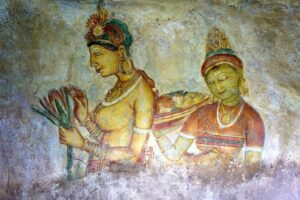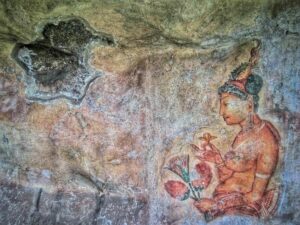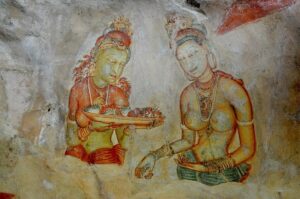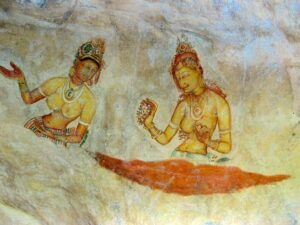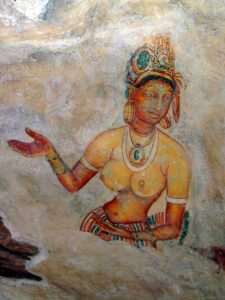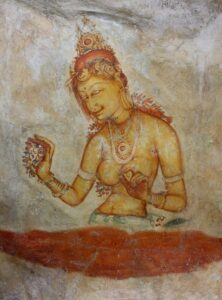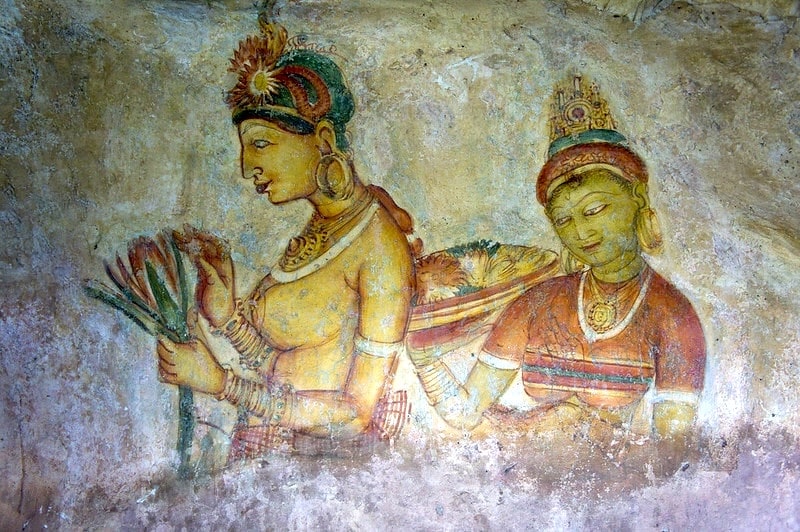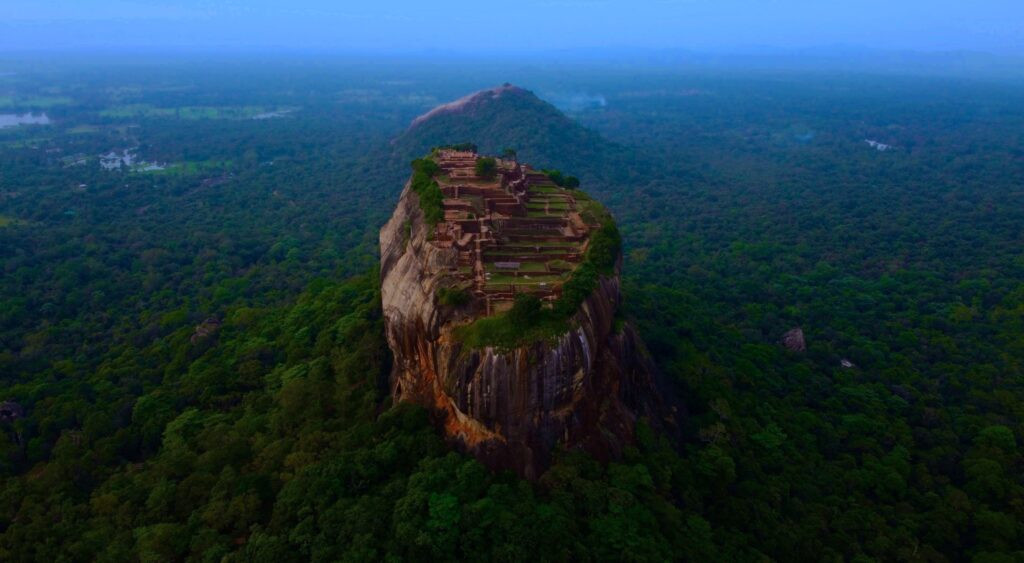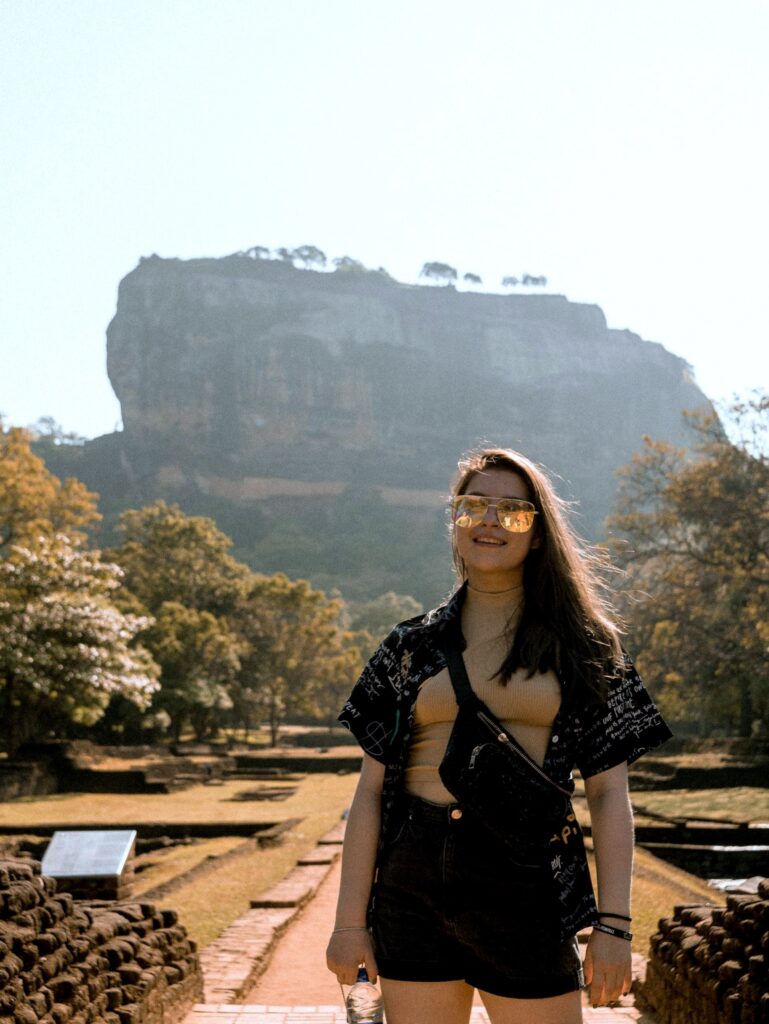Sigiriya Frescoes: Ancient Artistry on the Walls of a Sky Fortress
When planning your Sri Lankan adventure, one destination rises—quite literally—above the rest: Sigiriya Rock Fortress. Towering nearly 200 meters above the surrounding jungle, this ancient stronghold is not only a marvel of engineering and architecture but also a sanctuary of artistic heritage. Among its many wonders, the frescoes of Sigiriya are perhaps its most captivating treasure, offering a vivid window into Sri Lanka’s distant past.
A Canvas in the Sky
Perched high on the western face of the rock, the Sigiriya frescoes stand as a lasting tribute to ancient Sri Lankan artistry and the grand vision of King Kashyapa, who reigned from 473 to 495 CE. Originally, the entire rock face was believed to be coated in gleaming white plaster, meant to reflect the radiance of a celestial city. In the midst of this dazzling backdrop, the frescoes were created to enchant visitors approaching the citadel—mission accomplished.
Imagine standing before a rock wall that once stretched 140 meters wide and 40 meters high, adorned with a breathtaking gallery of paintings. In 1907, archaeologist John Still described it as “a gigantic picture gallery… the largest picture in the world perhaps.” Though many of these ancient artworks have faded over time, the surviving fragments continue to awe and inspire.

The “Heavenly Maidens” of Sigiriya
The frescoes primarily depict golden-skinned women adorned with elaborate hairstyles, gem-studded jewelry, and graceful postures. Known as the “Heavenly Maidens” or “Cloud Damsels”, these figures appear to float effortlessly against the dark backdrop of the rock face. Some carry lotus flowers or musical instruments, while others gesture in serene poses—each a portrait of divine elegance.
Their identity has long been debated by scholars. Some propose they are celestial nymphs or apsaras, spiritual beings meant to bless the fortress, a theory supported by their resemblance to the figures found in India’s Ajanta Caves from the Gupta period. Others argue that they represent royal consorts, daughters, or court attendants of King Kashyapa, echoing the luxury and refinement of his reign.
A Testament to Ancient Skill
Created using the true fresco technique, these masterpieces were painted directly onto wet lime plaster. As the pigments fused with the surface, the paintings achieved a level of durability and brilliance that has allowed them to survive for over 1,500 years. The use of natural materials and skilled brushwork—featuring sweeping strokes and variable pressure to create volume—set these frescoes apart from other works of the Anuradhapura period.
Even today, the vibrant colors remain surprisingly well-preserved, a testament to the sophistication of ancient Sri Lankan artists. Their craftsmanship extended beyond technique; these frescoes offer insights into the fashion, culture, and religious beliefs of a bygone era.
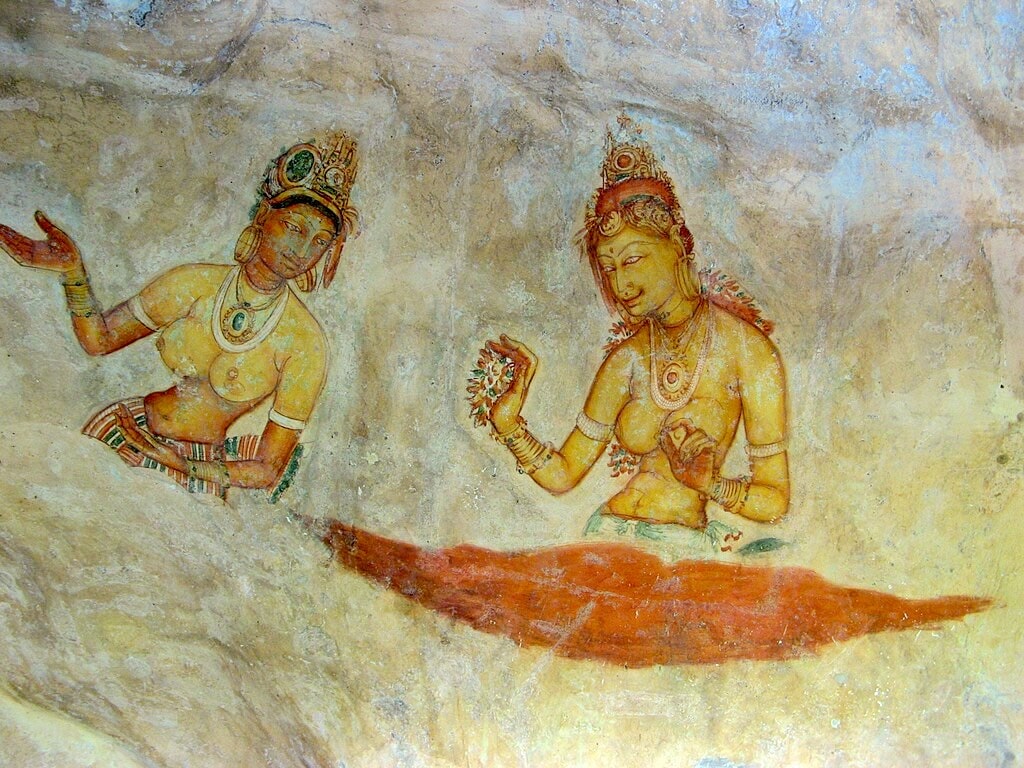
A Vanishing Masterpiece
Originally, it’s believed that around 500 figures once adorned the western rock face. Today, only a few dozen remain in a protected alcove accessible via a spiral staircase, carefully preserved from the elements. Historical graffiti found near the frescoes indicates that this vast mural was widely admired, even centuries after its creation.
Some lesser-known remnants can be seen in natural formations like the Cobra Hood Cave, where different stylistic choices hint at the diversity of the artistic expressions that once flourished here.
Preserving the Past for the Future
Preserving the Sigiriya frescoes has been a continuous challenge. Conservation efforts focus on safeguarding the paintings from weather, tourism, and time itself. Photography is strictly prohibited, especially flash photography, as it can damage the delicate pigments. Visitors are encouraged to respect these guidelines to help ensure the artwork’s longevity.
The best time to visit is early morning or late afternoon, when the light is soft and the crowds are fewer—allowing for a more intimate connection with this ancient art.

Sigiriya Travel Tips
Tips for a Successful Climb
How to Climb Sigiriya Rock Fortress
Final Thoughts
A visit to Sigiriya is more than a historical excursion—it’s a journey through time. The frescoes offer not just a visual feast but a profound connection to the artistic soul of Sri Lanka’s past. Whether you’re an art lover, a history enthusiast, or simply a curious traveler, the Heavenly Maidens of Sigiriya are sure to leave a lasting impression.
Picture Gallery
